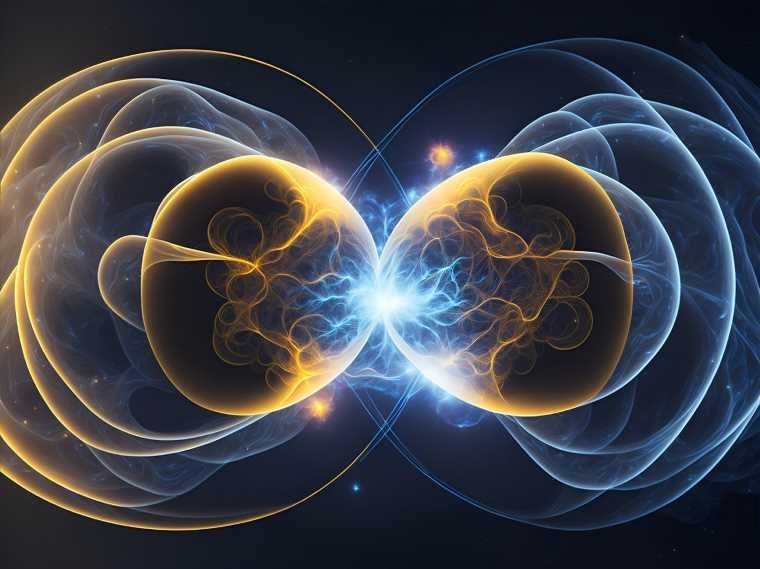A recent study aimed at understanding the origin of life looks to ancient electron transport chains for clues about its early evolution, resulting in a combination of approaches that incorporates the best pairing of current methods to date.
By combining these methods, which study Earth’s conditions either before or after life’s emergence, the researchers believe the key to understanding how the otherwise inert matter of the early Earth somehow sprang into action to create life may finally be within our grasp.
Two Methods Attempting to Understand the Origin of Life Have Opposite Approaches
Many research efforts have tried to understand or even replicate the conditions on early Earth that gave rise to the first life forms, but none have found an answer. Still, most of these efforts approach the problem from one of two distinct paths.
The first and most popular method, especially in the early days of this avenue of study, tried to model the various chemical and mineral conditions found on Earth in the first 200 to 700 million years after the planet’s formation, or somewhere between 4.28 billion and 3.77 billion years ago. This “bottom-up” approach is popular because a growing body of evidence seems to indicate that the first, most basic living organisms came to life during this period. Still, this trail has proved particularly challenging, and no reproduction of what researchers often term Earth’s “pre-biotic chemistry” have successfully cooked up life in a lab setting.
The second method involves looking at present-day organisms and trying to go back in time to determine what changed between today and the first billion years of our planet’s existence that led to these early forms of life. This process has led to many theories and avenues of research, especially since the knowledge of Earth’s various species continues to grow with each new discovery.
Still, like the pre-life models, this “top-down” has its limitations. Top of the list is the fact that researchers can only trace DNA back to its origins if remnants of that same code remain in current organisms. Like the bottom-up method, this approach has also yet to reveal an indisputable answer to the origin of life.
Now, a team of researchers says they have found the underlying commonality between both methods, a unifying component of all life that could unite them in the final, successful hunt for the answer to one of life’s oldest mysteries: where does life come from?
Electron Transport Chains as a Window into the Earliest Stages of Evolution
Published in the journal Proceedings of the National Academy of Sciences, the newly proposed unifying method detailed by Aaron Goldman, Associate Professor of Biology at Oberlin College, and Laurie Barge, Research Scientist in Astrobiology at NASA’s Jet Propulsion Laboratory (JPL), involves looking at the mechanisms where energy is used by all living things. They’re called electron transport chains.
“Electron transport chains are a type of metabolic system that is used by organisms across the tree of life, from bacteria to humans, to produce usable forms of chemical energy,” the press release announcing the newly published work explains. “The many different types of electron transport chains are specialized to each form of life and the energy metabolism they use: for example, our mitochondria contain an electron transport chain linked to our heterotrophic (food-consuming) energy metabolism, whereas plants have a wholly different electron transport chain linked to photosynthesis (the generation of energy from sunlight).”
Even rarer forms of life, often dubbed extremophiles for the extreme environments they inhabit, use electron transport chains, although they do it in more unique ways. Still, the bottom line is no matter which branch of the tree of life an earthly organism comes from, mastering this method is something they needed to do before they could spring into actual life.
“This kind of metabolic strategy was used by the very earliest life forms, and they present several models for ancestral electron transport chains that could date back to very early evolutionary history,” the researchers explain.
Search for Origin of Life Could Aid the Search for Life on Other Planets
In their paper, they also look back at previous bottom-up efforts that seem to indicate that even before life first emerged, electron transport chain-like chemistry “could have been facilitated by minerals and early Earth ocean water.” Basically, the method all life needs to exist may have been present even before life itself, offering it a sort of early advantage for those first precious organisms trying to take hold.
Next, the researchers say a specialized team that is able to look at all aspects of the mystery of the origin of life using their new approach is needed.
“The emergence of metabolism is an interdisciplinary question, and so we need an interdisciplinary team to study this,” says Barge. “Our work has utilized techniques from chemistry, geology, biology, and computational modeling, to combine these top-down and bottom-up approaches, and this kind of collaboration will be important for future studies of prebiotic metabolic pathways.”
Goldman agrees while also noting that if successful, their method could aid astrobiologists like Barge in the search for life on other planets.
“The most basic features of biology, that organisms are made of cells, that they pass genetic information through DNA, that they use protein enzymes to run their metabolism, all emerged through specific processes in very early evolutionary history,” says Goldman.
“Understanding how these most basic biological systems first took shape will not only give us greater insight into how life works at the most fundamental level,” he says, “but what life actually is in the first place and how we might look for it beyond Earth.”
Christopher Plain is a Science Fiction and Fantasy novelist and Head Science Writer at The Debrief. Follow and connect with him on X, learn about his books at plainfiction.com, or email him directly at christopher@thedebrief.org.

